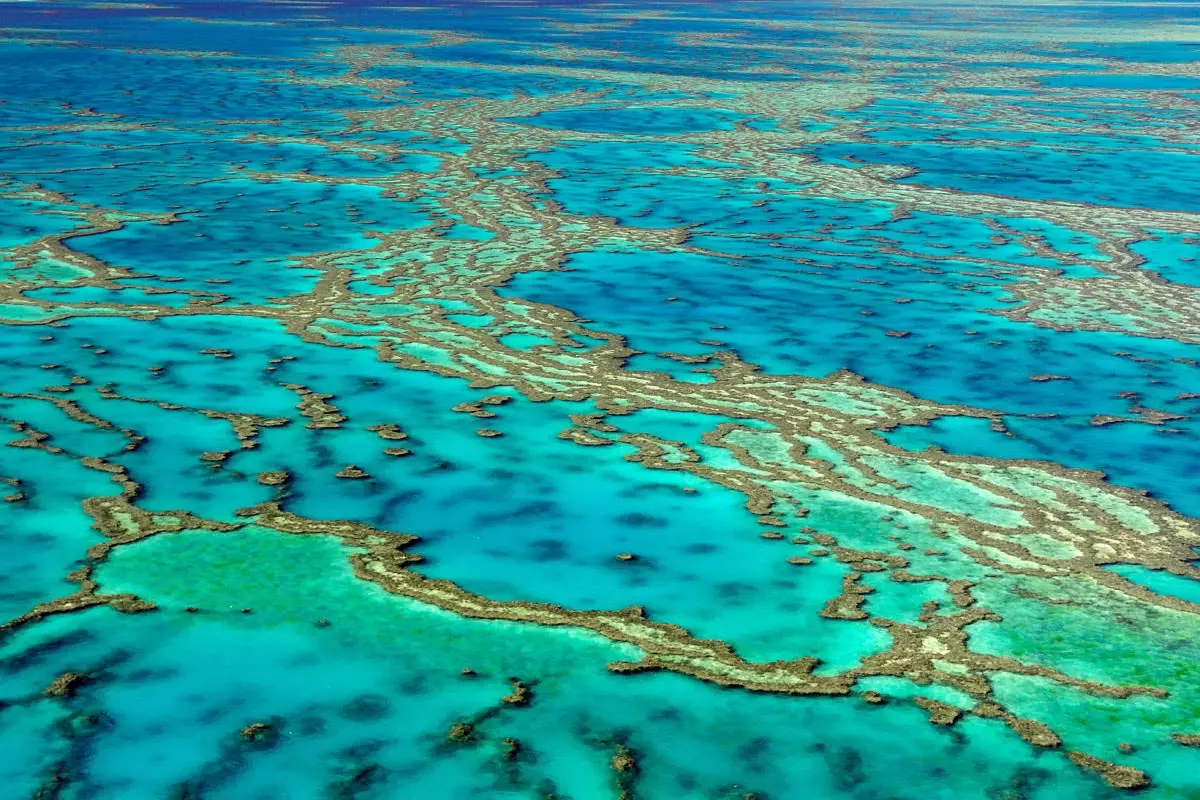
The largest living structure on the planet
The worst part has been borne by the northern area of the Great Barrier Reef, where an area of 700 km has been affected. The damage has reached in the last nine months to 67% of its corals of shallow waters in a place that, paradoxically, was the one that escaped the bleaching of the years 1998 and 2020, report from the ARC Center of Excellence for Coral Reef Studies.
"The coral is an animal that has an algae as a symbiont (zooxanthellae)," Patricia Martí-Puig, a specialist in Marine Protected Areas, genetics and corals, explains to Traveler.es. "Coral bleaching occurs mainly when high temperatures caused by climate change cause the loss of these symbiotic algae" she adds.
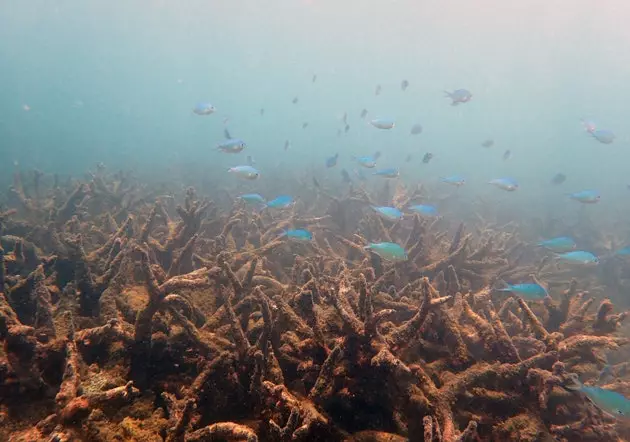
State of corals in one of the areas most affected by bleaching
The zooxanthella is responsible for giving the coral its color and providing it with food through photosynthesis. Their loss turns them white. "If the temperature decreases, the affected coral could still recover its zooxanthellae" , points out Dr. Martí-Puig.
Recorded losses have not been uniform across the Great Barrier Reef. In the central zone and the south they have been lower. "On average, in the central region 6% of bleached corals died in 2016 and only 1% in the South ", indicates Professor Andrew Baird, from the ARC and head of the team of scuba divers that was in charge of studying the reef in October and November.
"Bleaching occurs where there is more hot water for a longer time. This year, the southern reefs have been largely unaffected by bleaching due to closer to normal water temperatures in the last summer months", analyzes Martí-Puig.
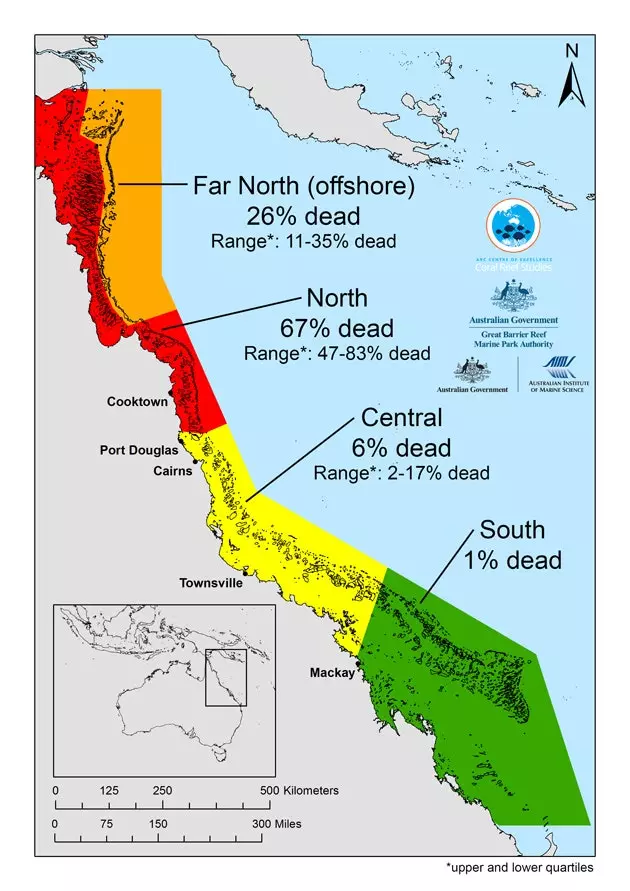
Proportion of coral loss along the Great Barrier Reef
IS YOUR RECOVERY POSSIBLE?
The researchers are hopeful with the data from the Northeast area of the Great Barrier Reef Marine Park, where the loss was less than in the rest of the North area. "We found a long corridor of corals that escaped the most severe damage off the eastern edge of the continental shelf at the northern end of the Great Barrier Reef." , says Professor Terry Hughes, Director of the ARC. "We think that these corals were partially protected from the increase in temperature by the arrival of cooler water from the Coral Sea."
Scientists expect the northern zone to take 10 to 15 years to recover the lost corals, although they are concerned that a fourth bleaching could occur soon and disrupt this slow recovery. "Corals can get new zooxanthellae, so the damage can be reversible, but if the stress persists, the coral can die" , indicates Dr. Martí-Puig, who has worked in the Mediterranean, Pacific, Caribbean, Red Sea and Indian Ocean.
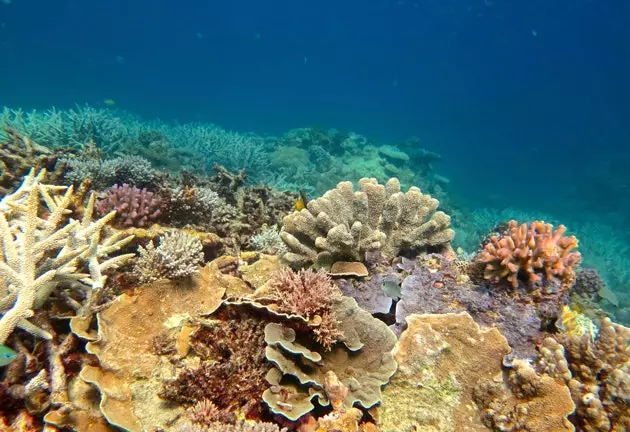
Damage is minor in the central and southern areas of the Great Barrier Reef.
The drop in temperatures that will arrive in the next six months suggests that some corals may recover. "It has been seen that some corals were able to recover within six months of bleaching on the Great Barrier Reef. Others died slowly, as they were unable to obtain food. Those who survived are fighting disease and are more vulnerable ", reflects Dr. Martí-Puig.
WHAT WOULD THE DISAPPEARANCE OF THE GREAT BARRIER MEAN?
"It would have devastating consequences," says Martí-Puig bluntly. And it is that coral bleaching would not only negatively affect corals, but also the fish and invertebrate communities that depend on them . This would reduce "genetic and species diversity, affecting the people who depend on corals, tourism and fishing." Currently, the Great Barrier Reef generates about 70,000 jobs related to tourism and generates about 5 billion dollars.
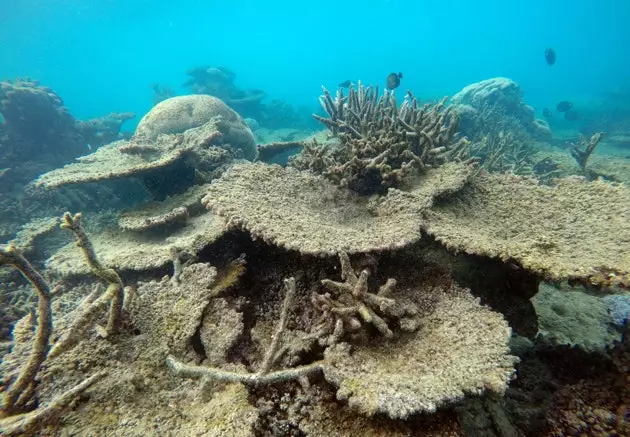
The areas most affected by whitening look like this
HOW IS IT DEALING?
Nowadays, The main threat to the Great Barrier Reef comes from climate change, although it also suffers from other pressures derived from human activity. : agriculture, mining, industry, deforestation, wastewater, coastal urban development... In recent years, progress has been made and the management of some of them has been oriented. Nevertheless, it continues to be necessary to combat climate change, reduce other impacts and act for the active restoration of corals . "The Australian Government has developed a Great Barrier Reef Recovery Plan to 2050 to protect the value of the reef and encourage sustainable use. This plan brings together governments, non-governmental organisations, industry and communities to implement recovery initiatives. of the Great Barrier," says Martí-Puig.
Follow @mariasanzv
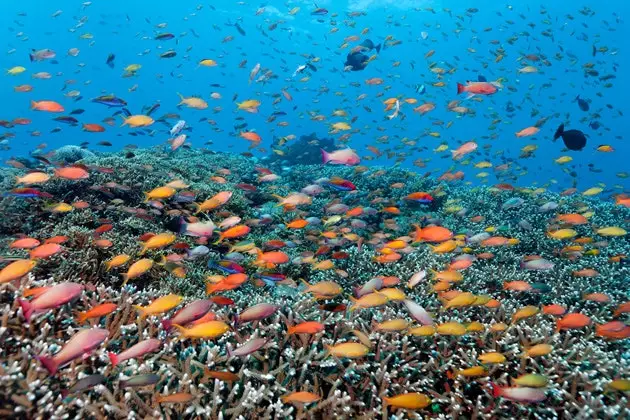
It is necessary to work so that this diversity does not die
